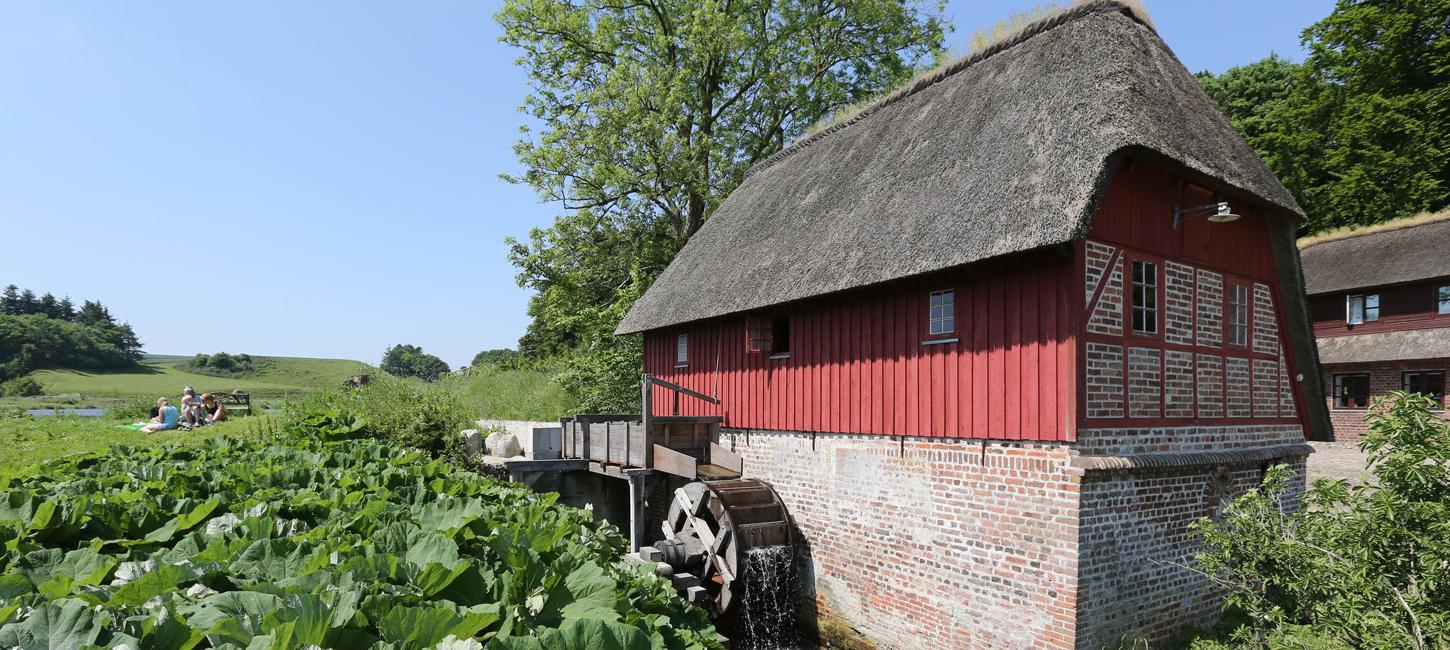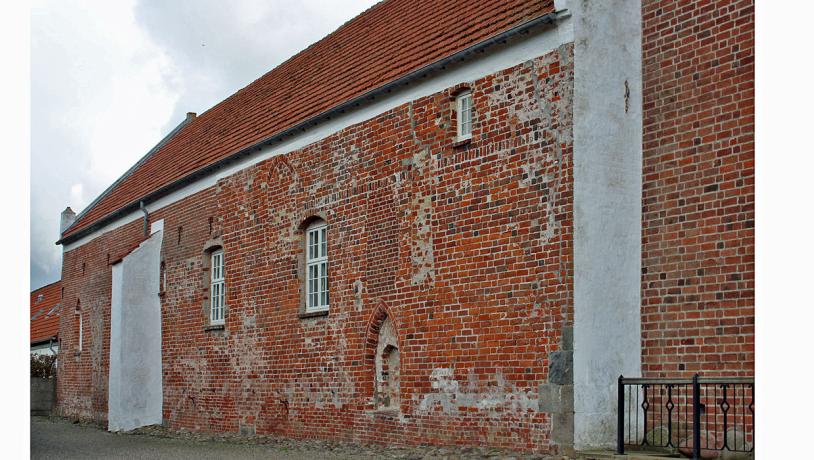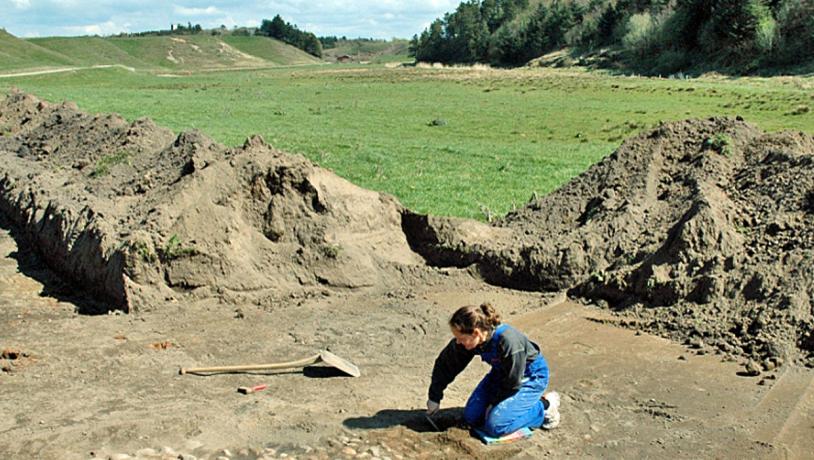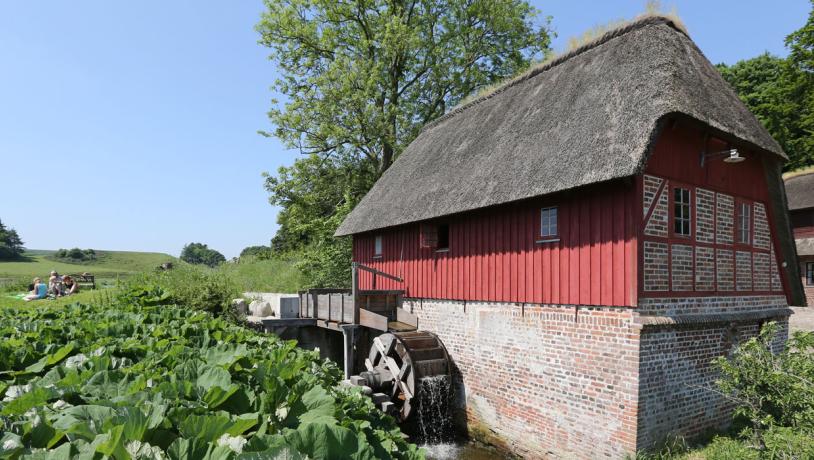
Gudum Monastery and Klostermølle
The village of Gudum (God´s Home) was an important traffic junction and spiritual centre in the Middle Ages.

Photo:Geopark Vestjylland
Today there are the remains of two nunneries and a restored watermill (Klostermølle). The local population is very active and has been involved in restoring the mill, has established a series of paths (Kløverstier) and has rebuilt the former school into a new parish hall.
A Nunnery at Gudum
The nunnery at Gudum belonged to the Benedictine Order. There are very few written sources providing information about its history in the Middles Ages. It is likely that it was established at about 1200, in keeping with most of the Benedictine nunneries in Middle Age Demark. It is first mentioned in a written source from 1268, from which it emerges that the nunnery owned a considerable amount of land. It was originally located in a deep melt water valley that cuts from west to east through the northern part of the parish. An inscription in Gudum parish church records that the nunnery was moved in 1492 from the valley up to the plateau near the parish church. The church was rebuilt and became part of the nunnery complex located just to the north. The walls of the church still have many traces of its link with the nunnery, but there are now no physical remains of the nunnery that was closed after the Reformation in 1536.

Photo:Holstebro Museum
The Vanished Nunnery
The archaeological section at Holstebro Museum has identified Gudum as a site of special interest under the title “Det Guddommelige Gudum” (The Divine Gudum). This is partly because of its name which means “God´s Home” and partly because of the many ancient relics found in the area. There is no doubt that this was an important religious location in the Iron Age and in Viking times. It seems that the nunnery was subjected to severe flooding in 1484 that caused considerable damage. A Middle Age nunnery consisted of many buildings that were spread over a wide area and it is likely that they occupied a large part of the valley floor. But how large was the nunnery? And where was its “core” with the cloisters, church and the closed area for the nuns? Over two days in October 2012, Kiel University carried out a magnetometer and georadar survey of the central part of the valley to determine the extent of the nunnery. They found a roughly 40 x 60 m complex that clearly formed the foundations of 3-4 connected buildings that enclosed an open yard. Could this be the site of the original nunnery at Gudum? Future excavations will be able to throw further light on this.

Photo:Henrik Winther Krogh
Klostermølle
The history of the watermill at Kloster goes back to the 1400s when the abbess at Gudum nunnery needed a mill to grind corn for fodder and bread and to grind oatmeal. The original watermill was destroyed during a sudden violent thaw in 1829. It was rebuilt in 1835 about 40 m further north on a more stable fundament. The mill is an L-shaped building with a mill and a taproom. A visit to the mill could take quite a long time. The present owners are the Tovborg family who can trace their connection with the mill back to 1854. They ensured that the mill was renovated with help from local volunteers, and re-established the millpond in 20124. They have also obtained finance for a new water wheel and grinder, partly from Realdania´s project “Underværker” (Wonders), that acclaims the efforts of local enthusiasts.
Relationships to the Aspiring Geopark
Kloster mill, the two nunneries and the village of Gudum have a harmonic relationship to the ice age landscape in which they are located. A system of paths called ”Kløverstierne” was established in 2015 by a group of volunteers with support from the “Open Air Council”. The story of the development of the ice age landscape and the related cultural history is presented here; this is an important element in the geopark. Gudum Parish Society arranges frequent trips that focus on the ice age landscape.